The charm and majesty of Andalusia's capital city
Seville, the capital of Andalusia, is a must-visit for any traveler to the region. It is the largest city in Andalusia and the fourth largest in Spain, located in the heart of the south, on the Guadalquivir River. Seville's strategic location has made it an important city of economic, political, and cultural significance for centuries.
Founded by the Iberians in the 2nd century BC, Seville quickly became one of the most important cities in the region. In 45 BC, the city was conquered by Julius Caesar, who gave it the name “Colonia Iulia Romula Hispalis”. During Roman rule, Seville flourished economically and its strategic location on the Guadalquivir River encouraged trade.
To this day, Seville is home to a number of Roman ruins, including partially preserved defensive walls, aqueducts, and the Alameda de Hercules. This tree-lined avenue is home to two imposing columns topped with statues of Julius Caesar and Hercules. The columns were erected in 1574 in honor of the city's founders.
The fall of Rome in 476 AD ushered in a new era for Seville. The city passed into the hands of the Visigoths, who renamed it Spali. However, Seville's fortunes soon changed again. In 554 AD, the city was conquered by Byzantine Emperor Justinian I the Great, who restored it to its former glory and made it a center of Christian learning and culture.
W okresie panowania Bizancjum Sewilla przeżywała okres rozkwitu kulturowego i religijnego. W 601 roku metropolitą miasta został św. Izydor, który zasłynął jako autor wielu dzieł teologicznych, filozoficznych i naukowych. Jego “Encyklopedia” była przez wieki podstawowym podręcznikiem dla uczonych w całej Europie.
Oto jedna z najbardziej znanych z jego “Złotych Myśli”:
... and visit Seville... - that's from me... 🙂 ...
Live as if you were to die tomorrow. Learn as if you were to live forever.
Then, in 712 AD, Seville was conquered by the Moors and renamed Isbiliya. However, the city remained in the shadow of Córdoba for centuries. Then in 1248 AD, Seville came under the rule of Catholic King Ferdinand III of Castile.
The Alcázar of Seville is a magnificent palace complex that dates back to the time of the Muslim conquest of Spain. It is one of the most famous and well-preserved Moorish palaces in the world. The Alcázar has been the home of Spanish royalty for centuries, and it has also been used as a military barracks and a prison.
The Alcázar is located in the heart of Seville, and it is surrounded by beautiful gardens and fountains. The palace is made up of a series of interconnected courtyards, halls, and rooms. The most famous courtyard is the Patio de las Doncellas, which is decorated with intricate tilework and carved stucco.
The Alcázar was used as a base of operations for Christopher Columbus when he returned from his voyage to America in 1492. It was also where Ferdinand Magellan made his preparations for his circumnavigation of the globe in 1519.
The Alcázar is a UNESCO World Heritage Site and one of the most popular tourist attractions in Seville. It is a must-see for anyone interested in Spanish history and culture.
The Alcázar of Seville is a must-see for any visitor to the city. It is a UNESCO World Heritage Site and one of the most popular tourist attractions in Spain. However, if you want to avoid the crowds, it is best to visit early in the morning. The Alcázar is open from 9:30am to 5pm, but the best time to go is around 9am or 10am. This is before the crowds arrive, and you will have more time to explore the palace and gardens at your own pace.
If you are planning to visit during the high season (July, August, and September), it is even more important to arrive early. The lines to get into the Alcázar can be very long, especially in the afternoon.
In addition to arriving early, there are a few other things you can do to avoid the crowds at the Alcázar.
Buy your tickets online in advance. This will save you time and avoid the need to wait in line at the ticket office. Consider visiting on a weekday. The Alcázar is less crowded on weekdays than on weekends. If you are traveling with a group, you may be able to arrange a private tour. This will allow you to bypass the general admission line and have a more personalized experience.

The famous Torre del Oro, or Golden Tower, was built in the 13th century by order of the governor Abu l-Ula. During the Arab occupation, it served as a defensive tower, and together with a second tower on the other side of the river, it blocked the entrance to the port.
The myth that looted gold was stored in it during the great expeditions is untrue. The name comes from the color of the lime mortar used to build it. Today, the tower houses the Maritime Museum, which exhibits nautical maps, paintings, and other memorabilia. It is worth a visit.
Sights of Seville
The Real Maestranza de Caballería de Sevilla is a bullfighting arena that was built in the 18th century. It is one of the oldest and most prestigious bullfighting arenas in Spain, and it is home to the annual Seville Spring Fair.
Inside the arena, visitors can find a museum that exhibits memorabilia from bullfighting, including costumes, posters, and other artifacts. There is also a gift shop where visitors can purchase souvenirs.
Beautiful Seville continued to develop, shining on the maps of Western Europe. Its true heyday began with the successive successes of the conquests of the New World.
In those days, about 18,000 tons of silver and about 2,000 tons of gold were brought to Seville in 150 years. Newly discovered fruits, vegetables, sugar cane, cotton, tobacco, and many other overseas treasures were also brought. Seville became a major trading center and the third-largest city in the Western World.
Seville's most impressive landmark is, of course, the Cathedral of Saint Mary. It is the largest and most impressive Gothic cathedral in the world! It was built from 1402 to 1506 on the site of a mosque, the remains of which can be seen in the 97-meter-high Giralda, which is now incorporated into the cathedral's structure.
You must climb up the Giralda - the views from the top are unforgettable!
The interior of the cathedral is home to the tomb of Christopher Columbus, the royal and main chapels, and an altar that is 27.8 meters high and 18.2 meters wide, considered to be the largest in the world, with a surface covered in three tons of gold. The sheer size of the building is truly awe-inspiring.

- * You will not find the name Christopher Columbus in Spanish-language travel guides or on leaflets - in Spanish the traveler's name was Cristóbal Colón and this name is used in Spain.
The area around the cathedral is home to other impressive historical buildings, including the town hall, the Renaissance stock exchange building from the 16th century, and the Archive of the Indies, which has been collecting information and documents about Spain's overseas possessions since the 18th century. It contains over 9 kilometers of records!
When visiting Seville, don't forget that it is called the "frying pan of Andalusia" - temperatures in the summer can exceed 40°C! Visiting in such conditions can be tiring, so in the heat of the day, we can hide in the shade of the trees, walking from the center through Maria Luisa Park to the Plaza de España, built-in 1928 for the Ibero-American Exposition in the neo-Mudejar style with Art Deco elements. In the center of the square is a refreshing fountain and a man-made river with charming bridges. At the bottom are richly decorated seats, representing all the provinces of Spain. Visiting the Plaza de España is a must! The whole is very characteristic and has been the backdrop for many film works.
This is where scenes for Star Wars Episode II: Attack of the Clones, among others, were filmed.
To see what Seville's skyline looks like, you have to get to the other side of the river, e.g. through the Puente de Triana to one of the most beautiful districts of Seville - the Triany. There, you can take part in a spontaneous flamenco show and stop for a ... cerveza (beer) & tapas 🙂
Inna dzielnicą wartą odwiedzenia ze względu na gąszcz uliczek z barami jest Barrio de Santa Cruz. Znajduje się tam Casa de Pilatos, czyli “Dom Piłata” – zbudowany w 1483 r. na wzór domu Poncjusza Piłata, w niedalekiej odległości od kościoła Cruz del Campo.
Panoramę Sewilli można także podziwiać ze słynnego Metropol Parasol, kojarzony ze względu na charakterystyczny kształt z gigantycznymi grzybami. W podziemiach tej awangardowej konstrukcji, zaprojektowanej przez niemieckiego architekta Jürgena Mayera, znajduje się muzeum z wykopaliskami pochodzącymi ze starożytności “El Antiquarium”.

Seville - kingdom of tapas
A walk through the center of Seville is an experience in itself. The facades of the buildings are stunning, the smells of incense wafting from small Moroccan shops are intoxicating, the music played by street musicians is enchanting, and the squares and squares are always bustling with activity. And, of course, there are the tapas. Seville is arguably the best place to try Spanish delicacies, with an endless variety to choose from.
Sevilla the cultural capital of Andalusia
Every city has its own unique history. Seville is no different, and its history is closely intertwined with the development of flamenco culture. The Triana neighborhood is often cited as the birthplace of flamenco, and it is home to many of the genre's most famous artists.
In the center of Seville, there are also the Museo del Baile Flamenco, or the Flamenco Dance Museum, and the Museo de Bellas Artes de Sevilla, the Museum of Fine Arts, which houses a rich collection of Spanish artists.
Seville is a large city, so a bicycle, for example, is useful for exploring all the major attractions. We can also move around by bus &metro metro, or taxi:
- The Metro website
- The website of the public transport company - Click Here
- Application with bus timetable by stop
The most important fiestas
- April - Great April Fiesta - one of the biggest fiestas in Andalusia
- April - Holy Week celebrations - This is the most important holiday in all of Spain, celebrated similarly throughout the country. However, in Seville and Malaga, the processions are the largest, with platforms weighing even several tons. Participating in the Holy Week celebrations is an amazing experience!
Ps Wymowa nazwy – Sevilla czyta się Sebija… v czyta się jak b po polsku, dwie litery l to polskie j.
How to get there? to Seville
Seville has its own airport. You can also fly into Malaga and then take a bus, car, or train to Seville.







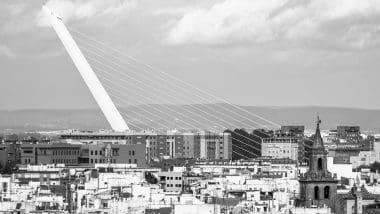
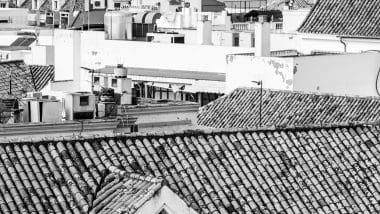
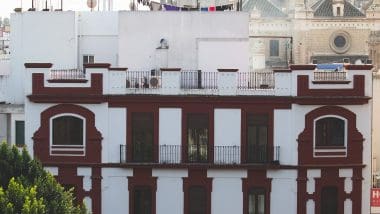




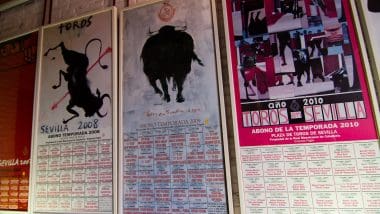


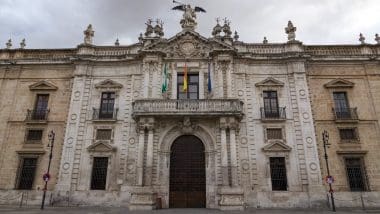












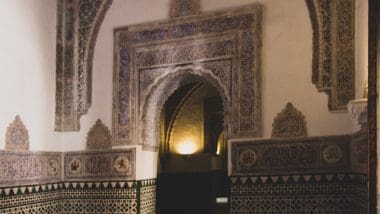





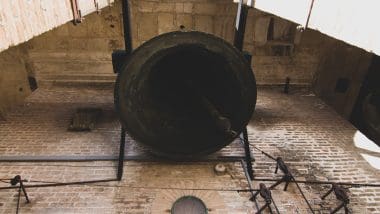


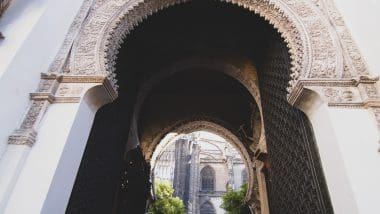
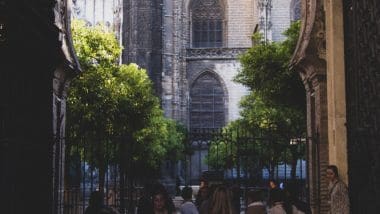

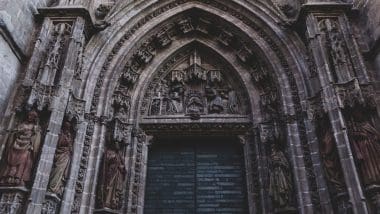






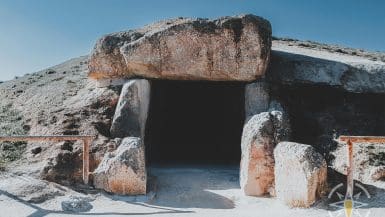


I would like to talk to you.